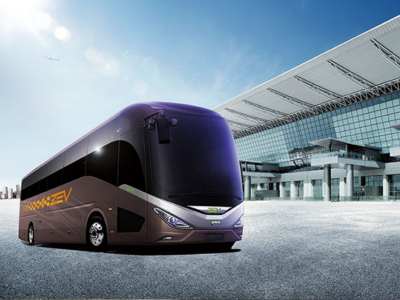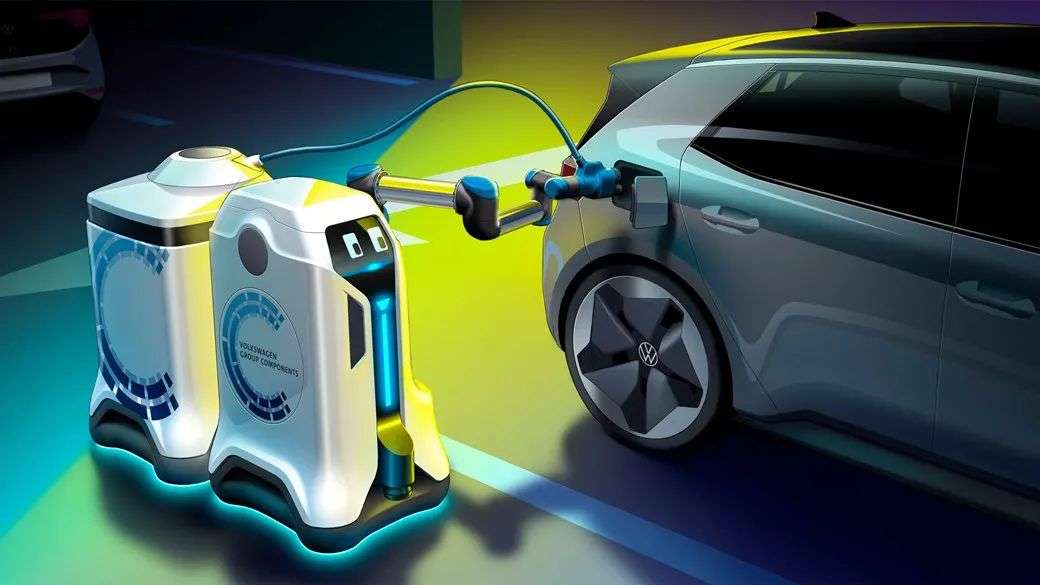The Ultimate Guide to Portable Power Inverter for Cars: Everything You Need to Know
When you're on the road, whether it's for work, adventure, or emergencies, access to electricity can make all the difference. A portable power inverter for your car can provide that essential power, turning your vehicle’s DC (direct current) power into usable AC (alternating current) to run household electronics, appliances, or charge your devices on the go. With so many options available, choosing the right portable power inverter can be a challenge. This comprehensive guide will provide in-depth knowledge on how to use portable power inverters for cars, what to look for when buying one, and how they can enhance your travel and work experience. Let’s dive into everything you need to know.
What is a Portable Power Inverter for Cars?
A portable power inverter for cars is a device designed to convert the 12V DC (direct current) power stored in a car’s battery into 110V or 220V AC (alternating current) power. This makes it possible to run standard household electronics, such as laptops, smartphones, cameras, and even small kitchen appliances, directly from your car.
In simpler terms, a portable power inverter provides an outlet in your car where you can plug in your everyday devices, just like you would plug them into a wall socket at home. Whether you're on a camping trip, a road trip, or need backup power during an emergency, a portable power inverter ensures you can stay connected and powered up while away from traditional electrical outlets.
Portable power inverters come in various shapes and sizes, ranging from small, lightweight units capable of powering a single device to larger models capable of running multiple appliances or even heavy-duty tools.
How Does a Portable Power Inverter Work?
Understanding how a portable power inverter for cars works is key to selecting the right model for your needs. In essence, a power inverter does the job of converting power from one form to another, making it usable for your devices.
- DC Power: All vehicles, whether traditional gasoline or electric, use a DC battery system to operate. This means your car battery supplies power in the form of DC electricity, which is not suitable for powering most household electronics.
- AC Power: The majority of devices we use in our everyday life – laptops, smartphones, televisions, and kitchen appliances – run on AC power, typically 110V or 220V, depending on the region. To power these items from your car, you need to convert the DC power from the car battery into AC.
Here’s how the process works:
1. Input: The inverter is plugged into your car’s DC power supply, typically using a standard 12V DC cigarette lighter or a direct connection to the car battery.
2. DC to AC Conversion: Inside the inverter is an electronic circuit that transforms the car’s 12V DC power into 110V or 220V AC. This is done through an internal mechanism that oscillates the direct current into alternating current.
3. Output: Once the conversion is complete, the AC power is made available through outlets or USB ports on the inverter, allowing you to plug in and power your devices.
Some inverters may also include additional features like surge protection, short-circuit protection, and overload protection to ensure your devices and the inverter itself are safe from electrical spikes or faulty connections.

Types of Portable Power Inverter for Cars
When it comes to choosing the right portable power inverter for cars, it’s important to understand the various types available, as they differ in power output, efficiency, and compatibility with different devices. The primary distinction between inverters lies in the type of waveform they produce: pure sine wave, modified sine wave, and square wave.
1. Pure Sine Wave Inverters
Pure sine wave inverters provide the most efficient and stable form of AC power, closely mimicking the power that comes from a standard electrical grid. These inverters are ideal for powering sensitive and high-end electronics, such as laptops, televisions, and medical devices. They’re the most expensive type of inverter but are highly reliable, as they ensure that the devices powered by them run smoothly and without risk of damage.
2. Modified Sine Wave Inverters
Modified sine wave inverters are the most common and affordable type of inverter. They generate a choppier waveform that can cause certain devices, particularly sensitive electronics, to operate less efficiently. This might lead to noisy operation or even potential damage to devices over time. However, they are sufficient for most common household appliances, such as lights, fans, small power tools, and some personal electronics.
3. Square Wave Inverters
Square wave inverters are the least expensive and least efficient. These inverters produce a very rough form of AC power, and as such, they are unsuitable for most modern electronics. They may only be effective for very basic, non-sensitive devices, such as light bulbs and some low-power tools.
4. Car Inverter vs. EV Inverter
- Car Inverter: These inverters are designed for traditional gasoline-powered cars, typically operating at 12V DC. They work well for low-to-moderate power needs, such as charging small devices or powering small appliances.
- Electric Vehicle (EV) Inverter: An electric vehicle inverter works with electric vehicles, which have higher power demands. EV inverters are typically designed to handle a larger voltage output (usually 48V or higher). They often come with added features to handle the higher energy needs of the car’s electrical system and may be able to power larger appliances or devices for longer periods.
Benefits of Using a Portable Power Inverter for Cars
Portable power inverters offer many benefits, particularly when you find yourself in situations where you need to power devices outside of a traditional home or office setting. Here are some key advantages:
1. Convenience
Having a portable power inverter in your car offers unparalleled convenience. You can charge your phone, laptop, or other electronic devices while on the move or parked. This is especially beneficial for people who rely on electronics for work or entertainment during long trips.
2. Backup Power During Emergencies
During power outages or emergencies, having access to a portable inverter can be a lifesaver. You can use your car’s battery to power essential devices like medical equipment, lights, or communication devices, providing a much-needed power source when regular electricity is unavailable.
3. Energy Efficiency
Portable power inverters, particularly pure sine wave models, are highly efficient. They waste less energy during the conversion process, ensuring your devices get the power they need without consuming excessive car battery power.
4. Versatility
Whether you're on a camping trip, working remotely, or using tools for a project, inverters make your car a versatile mobile power station. You can use them to run everything from a mini fridge to a power drill.

What to Look for When Choosing a Portable Power Inverter
Choosing the right portable power inverter requires consideration of several key factors:
1. Power Rating
The power rating of the inverter is one of the most critical factors to consider. It’s usually measured in watts and indicates the amount of power the inverter can provide. When selecting an inverter, you need to consider the power requirements of the devices you intend to run. Larger devices, like power tools or small kitchen appliances, require more wattage, while smaller devices like smartphones and laptops require less.
2. Outlets and Ports
Consider how many devices you need to charge or power at once. Many portable inverters come with multiple AC outlets and USB ports, allowing you to charge several devices simultaneously. If you’re planning to power larger appliances, check that the inverter provides enough outlets and the necessary voltage for those devices.
3. Size and Weight
If you plan on using the inverter for travel or camping, portability is crucial. Compact, lightweight models are easy to carry and can be stashed away in your vehicle without taking up too much space.
4. Safety Features
Inverters with built-in safety features like surge protection, overload protection, and short-circuit protection can help prevent damage to both the inverter and your devices. These features ensure that the inverter will shut down if something goes wrong, preventing accidents or device malfunctions.
Top Uses for a Portable Power Inverter in Your Car
A portable power inverter is incredibly versatile and can be used in a variety of situations, including:
- Charging Electronics: Charge laptops, smartphones, cameras, or tablets during long drives or while camping.
- Powering Appliances: Use inverters to run small appliances, such as mini-fridges, fans, or portable air conditioners.
- Camping: Power lights, electric grills, small refrigerators, or even a coffee maker while camping.
- Working On-The-Go: Professionals can use inverters to power tools, charge devices, or even run small office equipment in remote locations.
- Emergency Situations: In case of power outages, you can use your car’s battery to power essential devices like radios, lights, and communication equipment.
Electric Vehicle Inverters
With the increasing popularity of electric vehicles (EVs), the role of electric vehicle inverters has become more prominent. Unlike traditional internal combustion engine (ICE) vehicles, electric vehicles are powered by large batteries that operate on direct current (DC). To run AC-powered devices or appliances from the car’s battery, an electric vehicle inverter is essential to convert DC to AC power. However, the requirements for EV inverters differ significantly from the inverters used in traditional cars, due to the different power needs and design considerations of electric vehicles.
1. Higher Power Demand in EVs
Electric vehicles typically feature much larger batteries compared to conventional cars, designed to support not just the car’s driving needs but also extended use of electronic devices and systems. As a result, electric vehicle inverters need to handle significantly higher capacities of power, both in terms of voltage and wattage, to accommodate these demands. This higher capacity makes EV inverters particularly well-suited for powering larger appliances or maintaining power over extended periods, which is often required during long road trips or when camping in an electric vehicle.
For instance, EVs may need to power larger devices like portable refrigerators, air conditioning units, or even full-sized power tools, all of which draw a significant amount of current. The inverter in an electric vehicle is responsible for providing sufficient power without draining the vehicle’s battery too quickly or causing damage to the vehicle’s electrical system.
2. Efficient Conversion of DC to AC Power
While the standard 12V power in a gasoline-powered vehicle is suitable for running small devices like smartphones and laptops, EVs generally operate at a much higher DC voltage, often ranging from 300V to 800V depending on the model. This higher voltage means that EV inverters must be specifically designed to efficiently convert the vehicle's DC power into usable AC power without significant losses in energy.
The conversion process involves complex electronic circuitry that ensures the DC power from the car’s high-voltage battery is transformed into the correct AC waveform (pure sine wave or modified sine wave, depending on the inverter type). Pure sine wave inverters are typically preferred for electric vehicles because they provide a smoother, more stable current that’s better for sensitive electronics and high-power devices, ensuring that appliances run efficiently and safely without risk of damage.
3. Energy Management and Battery Longevity
One of the most critical aspects of electric vehicle inverters is their ability to manage the flow of energy to and from the car’s battery. Unlike traditional vehicles, where power use doesn’t impact the vehicle’s main function (driving), in an electric vehicle, the inverter must balance power consumption between running appliances and preserving the remaining charge in the vehicle’s battery for driving.
Effective energy management prevents excessive drain on the battery, ensuring that you don’t deplete your driving range when running devices or appliances. Many EV inverters come with smart energy management features that allow them to automatically adjust power output based on the battery's charge level, so they don't draw too much power and risk leaving the vehicle stranded. These systems help ensure the vehicle’s battery is used efficiently and safely.
Additionally, some advanced electric vehicle inverters may offer features like regenerative charging, where energy from the appliances you’re running can be sent back into the battery when not in use. This allows for greater overall energy efficiency, helping to maximize the vehicle’s range without needing to rely solely on traditional charging stations.
4. Integrated Systems for Extended Use
For EV owners who plan to use their vehicles for off-grid activities or as a mobile power station, electric vehicle inverters play a vital role in extending the vehicle’s capabilities. Many modern EVs come with integrated inverters that are designed to provide a reliable, high-capacity power source even when the vehicle is turned off. This can be particularly useful for camping, tailgating, or other outdoor activities where traditional power sources are not available.
Additionally, some electric vehicles are even designed to serve as a power source for an entire home. These "vehicle-to-grid" (V2G) systems enable energy to flow both ways—into the car and from the car—allowing EVs to potentially act as backup power sources during outages or as part of an energy-sharing system. In these cases, the vehicle’s inverter must be capable of not only supplying power to external devices but also integrating with home energy systems for maximum efficiency.
Conclusion
A portable power inverter for your car is an invaluable tool for anyone who needs reliable power on the go. Whether you're an outdoor enthusiast, a remote worker, or simply need to power your devices while traveling, having an inverter in your car can help you stay connected and powered up in virtually any situation. Make sure to choose the right inverter based on your power needs, portability requirements, and safety features. And for those driving electric vehicles, don’t overlook the importance of electric vehicle inverters that are tailored to meet the unique needs of EVs. With the right inverter, your car becomes a mobile power station, ready to support your electronic devices and appliances wherever the road takes you.
































